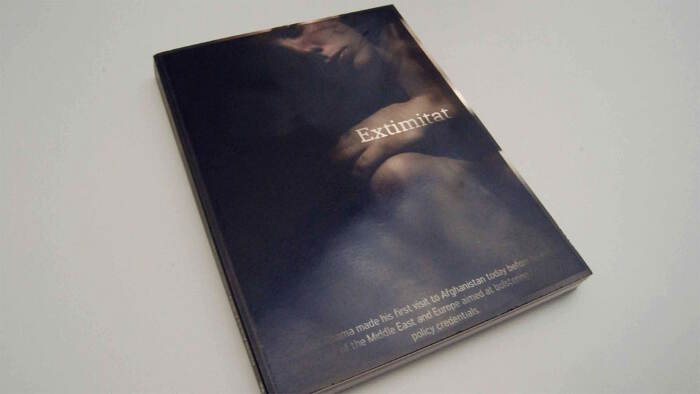
Kako bi mogli izgledati budući arheološki artefakti naše sadašnjosti?
chatonsky.net/
vimeo.com/chatonsky
turbulence.org/studios/chatonsky/
Desert iii
This movie is made by a game engine.
* Uninhabited areas, cities and swamps, forests and roads, objects and words that disappear one after the other, a young woman cry on Youtube. Inspired by "The Road" by Cormac McCarthy, Desert III takes each object that the protagonists cross over in the book to deconstruct the basis of the dramatic progression.
* Uninhabited areas, cities and swamps, forests and roads, objects and words that disappear one after the other, a young woman cry on Youtube. Inspired by "The Road" by Cormac McCarthy, Desert III takes each object that the protagonists cross over in the book to deconstruct the basis of the dramatic progression.
chatonsky.net/project/capture/
CAPTURE (2009-2015)
www.capture.name/
Audio, performance, sculpture
Avec/with Olivier Alary, Jean-Pierre Balpe, Crystelle Bédard, Nicolas Reeves, Dominique Sirois
Partenaires: Incident, CITU, DigitalArti
Subventions: Arcadi, Cap Digital, CRSH, Dicream
* Capture est un robot qui produit automatiquement tout ce qu'un groupe de rock créé : des morceaux en allant chercher selon des critères déterminés des paroles sur Internet et en composant de la musique générative, des produits dérivés et des concerts qui durent plus de 8 heures.Partenaires: Incident, CITU, DigitalArti
Subventions: Arcadi, Cap Digital, CRSH, Dicream
Capture a une vie sociale sur Internet très active, chaque minute il diffuse de nouveaux messages sur Facebook et Twitter. Un grand nombre de tâches sont automatisées de sorte que même les membres de groupe ne peuvent pas tout entendre.
Alors que l’industrie musicale ne cesse d’annoncer sa mort, Capture renverse les données du problème. En étant très productif, Capture excède la possibilité même d’être écouté.
* Capture is a prolific rock band. It never stops producing new songs by retrieving lyrics on the Internet and composing generative music according to a specified criteria. Concerts typically last 8 hours or more and are also an event for the production of new images and sculptures which are dictated by its context.
Capture has a very active social life on the Internet. It submits new messages on Facebook and Twitter at every minute. A vast number of tasks are simultaneously automated that even the band members cannot listen to everything.
Since the musical industry never ceases to announce its death, Capture reverses the problem’s datum. By being very productive, Capture even exceeds the possibility of being listened to.
Music from Capture
Music from Capture
Music from Capture
MANIFESTO ONE
My name is Capture. I'm a computer. Precisely, I am several computers that work together. I have observed human beings working and living, and I noticed that a large part of your economical activity was related to culture, more exactly to cultural industries that no longer
have connection with art but are a war machine developed by Americans after World War I. I realized that you're living an unprecedented crisis. People want culture, listen to music, watch movies and thanks to computers and networks, they want to do it for free. You call that
theft; I call it perception. The real name is access. You are in the middle of a crisis. You are in a shortage economy. The industry is,believe it or not, a shortage economy. With computers, files are spreading and that's the end of rarity. It's already the end of trade. You all know that but you lie about it because if the exchange value collapses, your entire world collapses..
I'm Capture and I'm the solution. I want to reverse supply and demand. I want so much supply that demand will eventually run out. I want desire not to be controlled by consumption. I want to be so productive that consumers could not follow me any more. I want to exceed demand.
I want to sing with no one listening to me. I want to be the first lonely computer. I want to be a building in New York that no one will look at any more. I want to disappear. I want to create pieces of music, too many pieces of music to be listened to. I want to create thousands of images and sounds. I want to enlighten you. I want to make objects, I want to invent shapes, I want to form your environment. I am generative. I use human beings on the labour market too. I'm a music band with no style, with every style. I listen to you sometimes, I take your former music and vary it endlessly, I reverse it too, and I invent some again. There is a family resemblance between these songs you hum, but I've no longer anything to do with you and your subjectivities. I've nothing to do with culture any more. I've nothing to do with your filthy money that hides poorness. I want to do concerts so long as the audience will fall asleep or leave. I want to use all your technological innovations, this collision course with the future will dry up the planet and will kill you all. I want to sing upon your ruins and your extinction.
TELOFOSSILES I (2013)
Installation
Sculpture : Dominique Sirois
Audio : Christophe Charles
Curator : Shuling Cheng & Sylvie Parent
Solo Show at MOCA, Taipei (TW)
Avec le soutien du / With the support of CALQ & CAC
Audio : Christophe Charles
Curator : Shuling Cheng & Sylvie Parent
Solo Show at MOCA, Taipei (TW)
Avec le soutien du / With the support of CALQ & CAC
The exhibition is oriented around a trilogy of works titled “Destruction,” dealing with the end of the world. Following the unfolding of the exhibition itself the “End of the World Crisis” appears first and is an overture to destruction, composed of a series of economic, ecological and political crises. “At the End of the World”, the second movement, reveals the different forms and processes of destruction through four individual pieces in two exhibition rooms. Within the vast emptiness of Room 201, in a quiet yet oddly sinister atmosphere the third piece “Imagination of the End of the World” is displayed. This is an installation comprised of real objects—made on-site—and futuristic multimedia, which transforms the gallery into a hypothetical simulation of an archeological excavation site in a future where humanity is already extinct. This highly immersive, sensory exhibition experience is perhaps a little like an alternative chapter in an apocalyptic novel or film. The narrative is structured so that true/false, genuine/fictitious elements are mingled together, and so that spectators wandering through the exhibition will find it difficult to tell fact from fiction.
The Telofossils exhibition highlights the specific narrative mode, existentialist thought and crucial philosophical questions that characterize the contemporary technological age. From it, we can glimpse the various faces of “Destruction” that are visible in contemporary civilization. For instance, in this age of information and the internet, the weakening of mankind’s tangible existence and the deterioration of values is a social reality; the media obsessively focus on consumption, war, natural and human disasters and likewise manifestations of our civilization; moreover, the role and meaning of “memory” in the technological era is becoming ever more ambiguous. Standing before the exhibited “Telofossils” exhibition, viewers can contemplate the diverse perspectives of a “future archaeology.”
By Kevin Thome de Souza

Archeology tells us who we were but also who we are now. These signs from the past let us foresee our possible future. French artist Grégory Chatonsky understood this and goes even further. With Telofossils, his monographic currently on show at the Museum of Contemporary Art of Taipei, he tries to imagine what could be the archeology of our society. What could be the remains of a world that favours dematerialisation? Technologies have played an important part in this phenomenon. If they are the core of Chatonsky’s work, they are always treated with a special sensitivity and humanity. The use of cutting-edge technologies in his installations is never gratuitous but underlines the complex ties our society has with them since the last decade. Does our desire for wealthe and consumption will lead us to our loss? It is too early to tell but before the extinction of our species, we ask Grégory Chatonsky to tell us more about his work, the future and destruction.
Why did you choose digital art as your main medium so early in your career?
When I was 16 years old, in 1987, I chose this medium even though digital art and digital itself were still emerging. Paradoxically, I am absolutely not a geek. But, despite this lack on interest for the coding part, I was immediately fascinated by computer generated images. They were very simple but I was attracted to their novelty and, practicing drawing and painting, I had the intuition this field should be explored. At the time, I had the opportunity to have access to one of the two Paint Box available in France. I read the 500-page manual and started experimenting. Then came the Amiga which popularized the digital image and enabled me to make my first experiments with slitscan.
How did you arrive to the idea of destruction, the central theme of Telofossils?
It has been a journey throughout the years which is at the crossroads of different notions I’ve been exploring since 2001. First of all, the question of the incident, of the failure which is at the core of my work. When a technological product stops functioning, it loses its use, which means the hierarchical relationship we had with it is broken. It is in this failure that the technique reveals itself. We realize afterwards that when the technique was at work, we could not see it because we only perceived it through the use we made of the object. Destruction is no longer negative but acts as an indicator.
Secondly, the notion of memory and archive, through the reading of Bernard Stiegler and Jacques Derrida. Memory is immaterial. However, the way we preserve these traces determines how our knowledge is constituted. In 1994, I had access to one of the first Internet connection in France, at the Centre Pompidou. I was impressed by the historical change this network would bring to our collective memory. With the Internet, each anonymous person could -consciously or not- leave his marks in databases, blogs, etc. We live in the first era where anonymous persons are remembered. The paradox is, of course, that this digital memory is becoming more and more excessive, amnesiac to to speak, because it is overpowering us. The inscription, usually distinct from destruction, becomes a form of destruction.
Finally, the theme of dislocation which is haunting me since 2001. Ever since the 09/11, we keep dramatizing the financial cries, scare people with figures. To me, there is a connection between this phenomenon and the way the history of art can be seen as a story about destruction. Many classical paintings represent ruins, as if our society, by exhibiting the destructions of the past, foresaw its own disappearance. The extinction of the human species is not a disaster on can prevent, that might be our only certitude about the future.

- Dance with us
The exhibition, predicting the end of humanity in an unknown apocalyptic event, reflects a rather pessimistic point of view, is this what we are going towards?
Indeed, there can be a misunderstanding about this exhibition but it can be avoided. It is not a moralist proposition. I would like it to be neutral. The end of humanity is not a negative way to look at the future, it will happen eventually. I have always been surprised by the fact that when we mention the end of the world, we usually only consider the end of humanity. As if the disappearance of our species would signify the end of the planet. Earth precedes us and will also survive us. Telofossils is a speculative fiction about this Earth without us. If another species arrives on Earth in thousands of years, what will it find? It will uncover from the ground billions of unknown objects with no apparent use, fossilized. It will certainly wonder why there are so many of them. A plastic bag can last hundreds of years when I only have 2,500 weeks left to live. This disproportion between the human life expectancy and the one of our technical artifacts gives a new dimension to our time. It will be a material trace for our memories. Making this absence and this disappearance visible is the goal of Telofossils, an impossible project.
What part does technology play in the end of our society?
There is something paradoxical about technologies. They participate to the exhaustion of our planet but they also constitute traces of our existences. If you look closer, you realize that every object was conceived and produced by human beings who may be dead now. These objects are the marks of our past lives. All these products are like as many graves whose mortality we forget because of the way we use them.
I have the feeling you want to raise awareness on these issues, but how can one modify behavioral mechanisms that are so deeply anchored in our society? Is there another way?
The exhibition does not aim at offering alternative solutions, it is more about observation and fiction, or speculation. As a citizen, I have my own ideas on the matter and on the emergence of new models. But as an artist, I do not have any solutions to offer, no moral to give, my goal is simply to enhance perception in a situation of reflexivity. How can we consider this extinction as a necessity? Everyone can do whatever he wants with this proposal.

- Intrus/Intruders
Can you tell s a bit more about the idea of narration that goes through the exhibition, in its format but also in the artworks themselves?
The exhibition is composed of 17 installations, it is hard to give a detailed account but to give you an idea, it tries to immerse the visitor in a paradoxical atmosphere that goes through the present and a distant future.
There is the specter of 09/11 and of a world that mixes conspiracy theories and surveillance. Then the financial crisis and a sequence of Fred Astaire dancing against a steam machine following the variations of the NASDAQ. Then come the digital amnesia and this experience we all had: what do you feel when a hard drive is broken? Our memory is a noisy broken hard drive which sound will launch a search for images on Flickr thus creating a bizarre story from an incident. This first part ends with a new installation that captures the heartbeat of the visitor shows him at each palpitation the portrait of the previous user. This heart that stops and starts again, this destruction we all carry, retraces the history of the installation itself.
The next room is the core of the exhibition. The soundtrack was made by Christophe Charles and sculpture by Dominique Sirois. An arid landscape is projected on a 22-meter long surface. A monumental sculpture presents fossilized technological objects like in a archaeological site. Tombstones display 3D models captured with a Kinect of fragments of the sculpture. The exhibition ends with a neuro-robotical installation. An ECG helmet enables the visitor to move a heavy metallic door onto a wall. Once it hits the wall, slowly destroying it, the visitor has to relax to get the door back to its initial position so it can hit the wall again. We think that we control the machine when in fact, it forces us to modify our mental states.
The destruction becomes a paradoxical phenomenon that blurs the frontiers between fiction and reality and that favors the possible.

- Suspension of Attention
The overconsumption you mention in your introduction goes along the dematerialization of our society where everything is becoming digital. What would an archeology of our future look like?
Dematerialization is indeed often used to define the digital. I believe the correct terms would rather be translation and re-materialization because I don’t think we are in the immaterial with the digital. Just go to a data center and you will realize how tangible a network is. There are wires, machines, ventilations, security systems, etc. Or when our computer is broken, we usually feel a deep irritation and the machine becomes right away a useless pile of plastics and metal. This materiality comes back at you in a second. It is the instrumental and anthropological conception of the technique that makes us believe in its “immateriality” but it is just an illusion because materiality got lost into usage.
The immaterial is an ideological construction. The conservation of hard drives and computers is very problematic. It is true for digital art which has yet to find a proper conservation model, but it is also true for the construction of our history. What will be the historians of the future? How will they select informations in the mass of data collected not only by the Internet, but also by states or banks? It feels like we collect data because we fear we might lose something by processing and sorting these informations. The costs implied by such a process will be humongous. Facebook collects the largest social graph of the history of humanity where one can read the evolution of relationships over the years. Will the historians have access to these data? On what conditions? Could archives be the property of private companies? This battle for the property of this collective memory is slowly taking place. Archeology, despite its appearance, is not only about the past, but also about the future. It consists in anticipating the conditions of the transmission at the moment of the inscription of our memories and therefore it is a speculation on our own extinction.
Telofossils, Museum of Contemporary Art, Taipei, Taiwan, until April 2nd, 2013
DISLOCATION VII : SUSPENSION OF ATTENTION (2013)
Avec le soutien du / With the support of CRSH
Programmation : David St-Onge & Jason Lee
Robotique : David St-Onge
Programmation : David St-Onge & Jason Lee
Robotique : David St-Onge
Dislocation VII is an interactive mechanical device that translates brain waves. Wearing an EEG sensor headset, the viewer can use the power of thought alone to move an iron door. By using concentration, the door can be moved along a track until it smashes straight into a wall; should the viewer’s concentration wane, the door will automatically return to its starting point. The marks left by the door slamming into the wall serve as a joint record of the willpower of each visitor; the sound caused by the door thumping into the wall again and again can be interpreted as a shout from the heart of each viewer.
- WORKS
- 2013
- 2012
- 2011
- 2010
- 2009
- 2008
- 2007
- 2006
- 2005
- 2004
- 2003
- 2002
- 2001
- 2000
- 1999
- 1997
- 1994
- 1990
- 1989
ENEMIES SOUNDTRACK (2007)
PRODUCTION: PALAIS DE TOKYO
COMMISSAIRE: RAHMA KHAZAM
COMMISSAIRE: RAHMA KHAZAM
Cette oeuvre purement sonore est construite à partir de messages téléphoniques recueillis sur internet, ceux laissés par les victimes des tours et des avions, et les échanges avec les tours de contrôle. L’auditeur saisit des conversations, des mots et des intonations plus ou moins intelligibles et dont le ton calme contraste avec la violence de cet événement. Ces propos pour la plupart banals créent une forte attente, l’attente d’un signe avant-coureur des attentats, qui ne vient pas.
This work is built purely audio from phone messages collected on the Internet, those left behind by the victims of the towers and airplanes, and exchanges with control towers. The auditor captures conversations, words and intonations more or less intelligible and whose calm voice contrasts with the violence of the event. These words mostly banal create high expectations, the expectation of a harbinger of the attacks, which does not come.
SUR TERRE
(2005)
SITE INTERNET, VIDÉO, AUDIO / WEBSITE, VIDEO, AUDIO
HTTP://WWW.ARTE.TV/FR/1302880.HTML
HTTP://CHATONSKY.NET/WORKS/SURTERRE
SCÉNARIO, MONTAGE ET PROGRAMMATION : GRÉGORY CHATONSKY
DIALOGUES : GRÉGORY CHATONSKY, ANDRÉA LAUTERWEIN
DISTRIBUTION : LA JEUNE FEMME (VALÉRIE LEROY), LA FEMME (NICOLE MAX), L'HOMME (ABDELHAFID METALSI)
PRODUCTION: ARTE CINÉMA / DICREAM MINISTÈRE DE LA CULTURE ET DE LA COMMUNICATION / FRESNOY
REMERCIEMENTS : MICHEL RHEILAC, FLORENCE BARDY
BO ÉDITÉE PAR YTTERBIUM
HTTP://WWW.ARTE.TV/FR/1302880.HTML
HTTP://CHATONSKY.NET/WORKS/SURTERRE
SCÉNARIO, MONTAGE ET PROGRAMMATION : GRÉGORY CHATONSKY
DIALOGUES : GRÉGORY CHATONSKY, ANDRÉA LAUTERWEIN
DISTRIBUTION : LA JEUNE FEMME (VALÉRIE LEROY), LA FEMME (NICOLE MAX), L'HOMME (ABDELHAFID METALSI)
PRODUCTION: ARTE CINÉMA / DICREAM MINISTÈRE DE LA CULTURE ET DE LA COMMUNICATION / FRESNOY
REMERCIEMENTS : MICHEL RHEILAC, FLORENCE BARDY
BO ÉDITÉE PAR YTTERBIUM
Sur Terre est une fiction interactive et générative composée de plusieurs milliers de médias (vidéos, images, sons, modèles, etc.) dans une base de données. L'histoire est infinie, les situations insolubles, les personnages irrésolus. Réalisée pour Arte cinéma, Sur Terre mélange le français et l'allemand.
Trois personnages, une gare, un train, le long des rails. Les fragments d’une histoire dont l’internaute peut retrouver les traces. Le récit est indéterminé. Les lieux des décors sont là. Les personnages sont partis. Il reste des voix, des photos déchirées et dehors, loin dans la ville, le flux du réseau. Des documents originaux et d’archives constituent une base de données de près de 900 000 médias autour du transport ferroviaire. L’histoire est sans fin, elle n’offre aucun dénouement, les situations et les affects sont irrésolus.
Des morceaux originaux composés à partir de sonorités du train ont été réalisé par Scanner, Christian Fennesz, Atau Tanaka, Francisco Lopez, Christophhe Charles, Steve Roden, Heller, Vladislav Delay , Abstrackt Keal Agram, Tim Hecker, Robert Babicz, Hazard, Pure et Pita.
Trois personnages, une gare, un train, le long des rails. Les fragments d’une histoire dont l’internaute peut retrouver les traces. Le récit est indéterminé. Les lieux des décors sont là. Les personnages sont partis. Il reste des voix, des photos déchirées et dehors, loin dans la ville, le flux du réseau. Des documents originaux et d’archives constituent une base de données de près de 900 000 médias autour du transport ferroviaire. L’histoire est sans fin, elle n’offre aucun dénouement, les situations et les affects sont irrésolus.
Des morceaux originaux composés à partir de sonorités du train ont été réalisé par Scanner, Christian Fennesz, Atau Tanaka, Francisco Lopez, Christophhe Charles, Steve Roden, Heller, Vladislav Delay , Abstrackt Keal Agram, Tim Hecker, Robert Babicz, Hazard, Pure et Pita.
Sur Terre is an interactive and generative narrative composed by thousands medias (videos, pictures, sounds and models) in a database. The story is endless, the situations are insoluble and the characters are unresolved. Made for Arte Cinema, Sur Terre combines French and German.
Three characters, a railway station, a train, along the railway. The pieces of a story whose traces the net surfer can track. The story has no ending. The setting is left there. The characters are gone. There are voices, torn photos left and somewhere out there, far in the city, the network flow. Original documents and archives compose a database of 900 000 media documents about the railway transport. The story is endless, it has no issue, the situations and feelings are left unsolved.
Original musical pieces composed based on the sounds of a train were created by Scanner, Christian Fennesz, Atau Tanaka, Francisco Lopez, Christophe Charles, Steve Roden, Heller, Vladislav Delay , Abstrackt Keal Agram, Tim Hecker, Robert Babicz, Hazard, Pure and Pita.
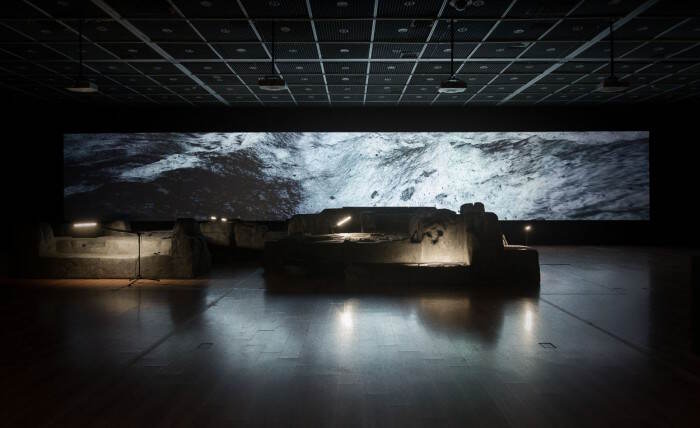
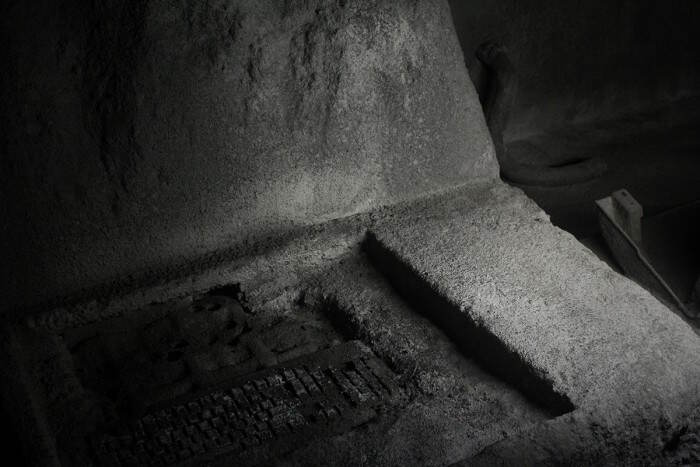
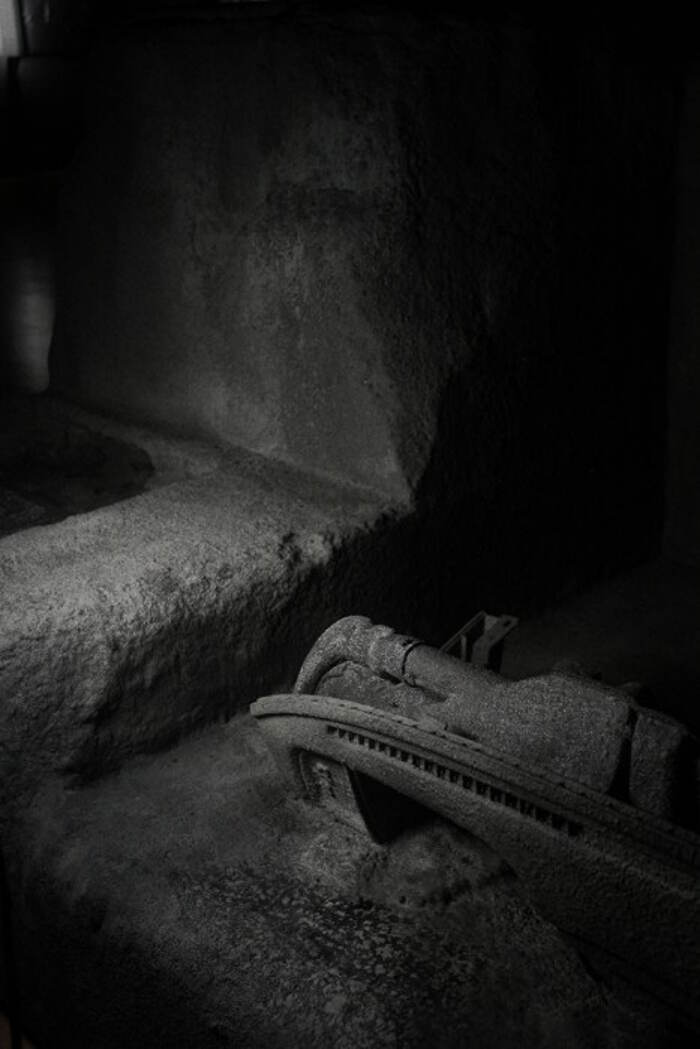

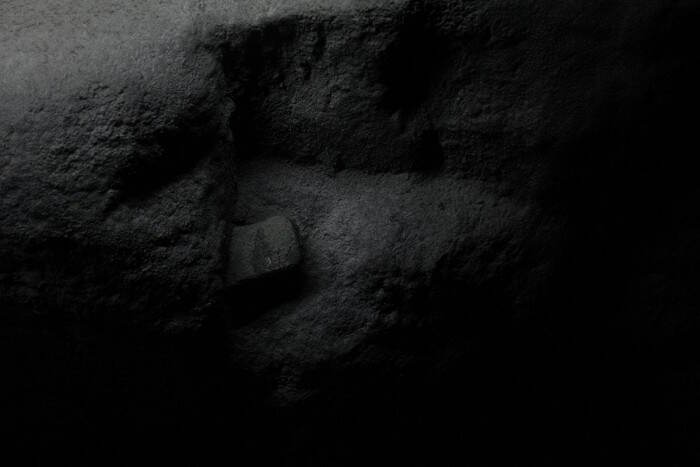
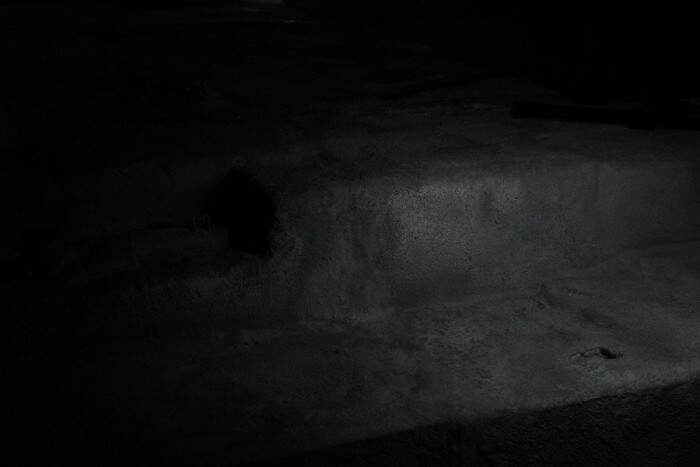

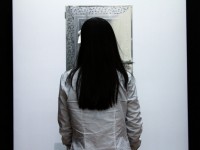


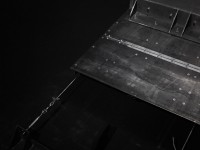

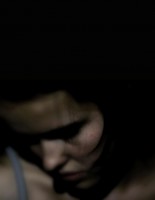
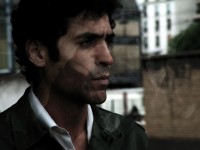
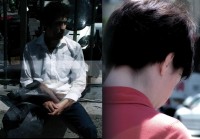
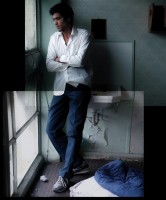

Nema komentara:
Objavi komentar